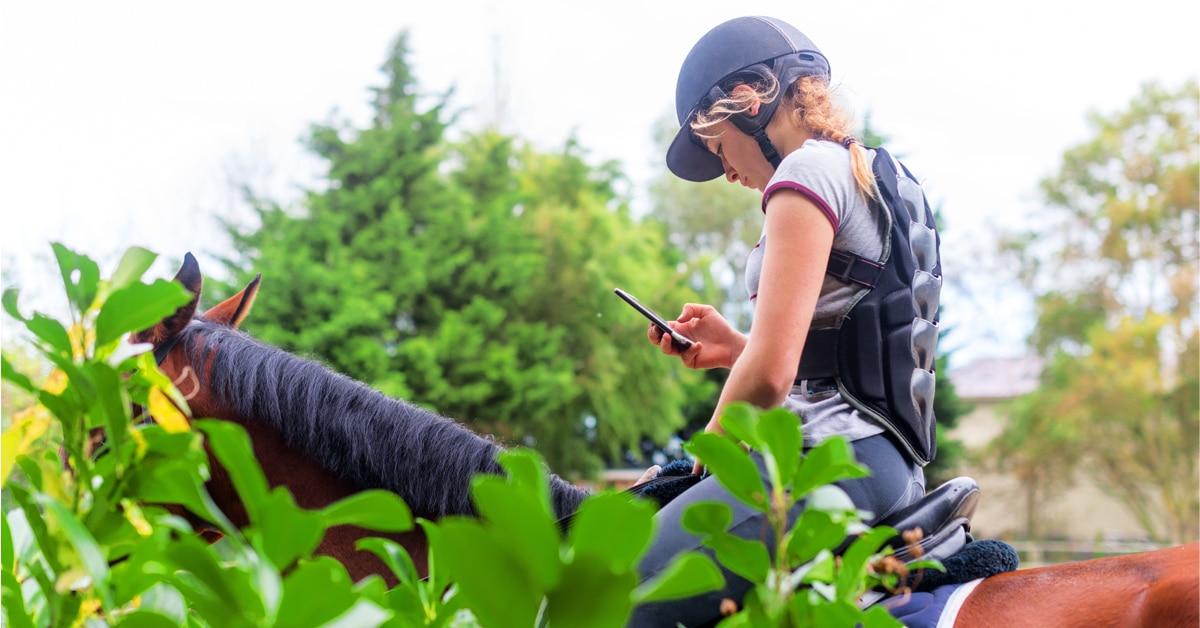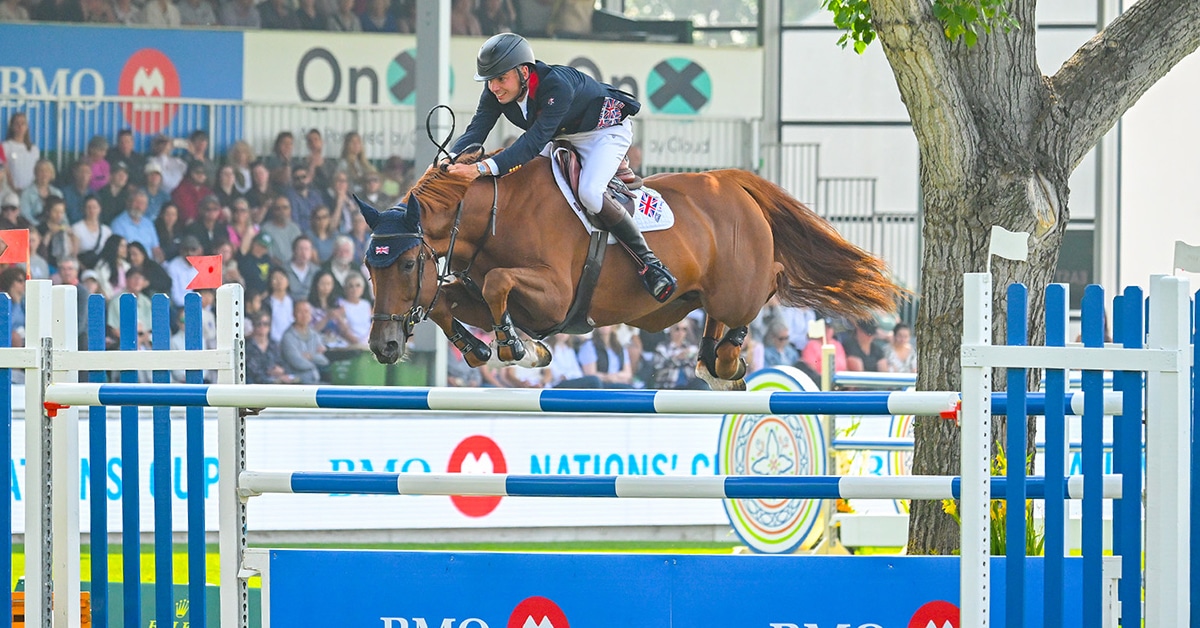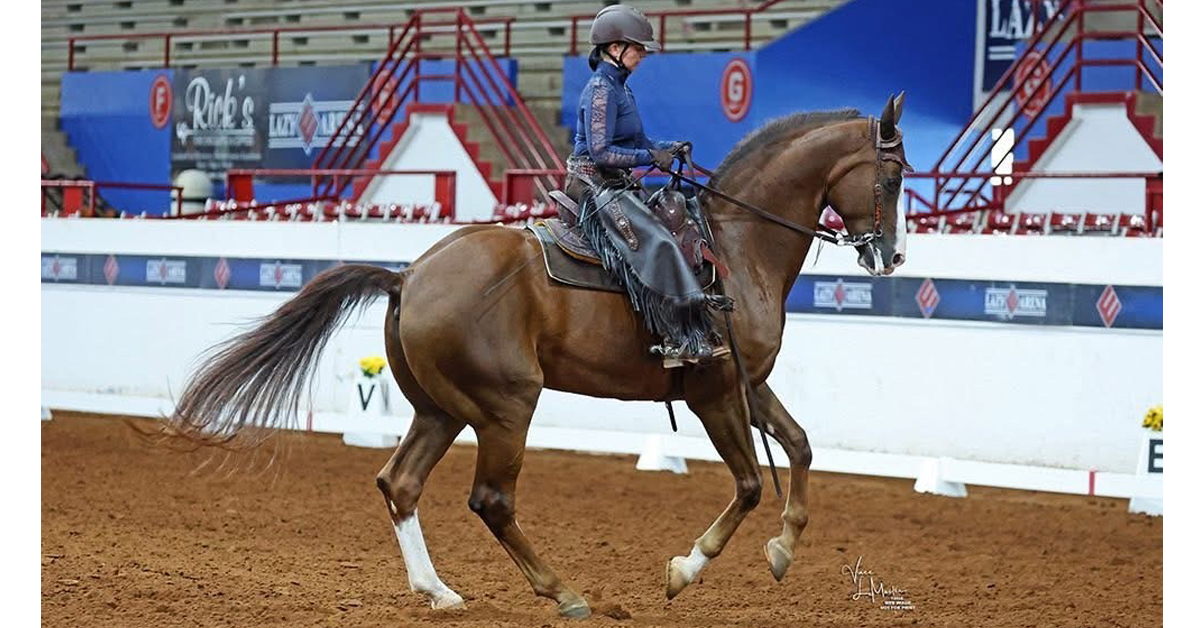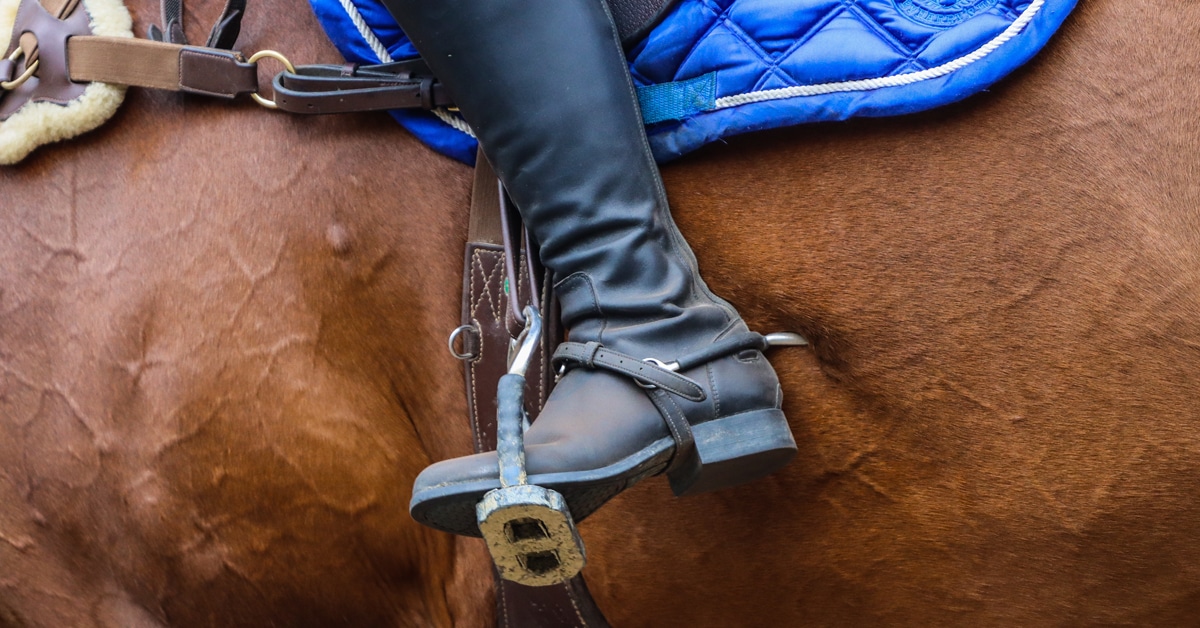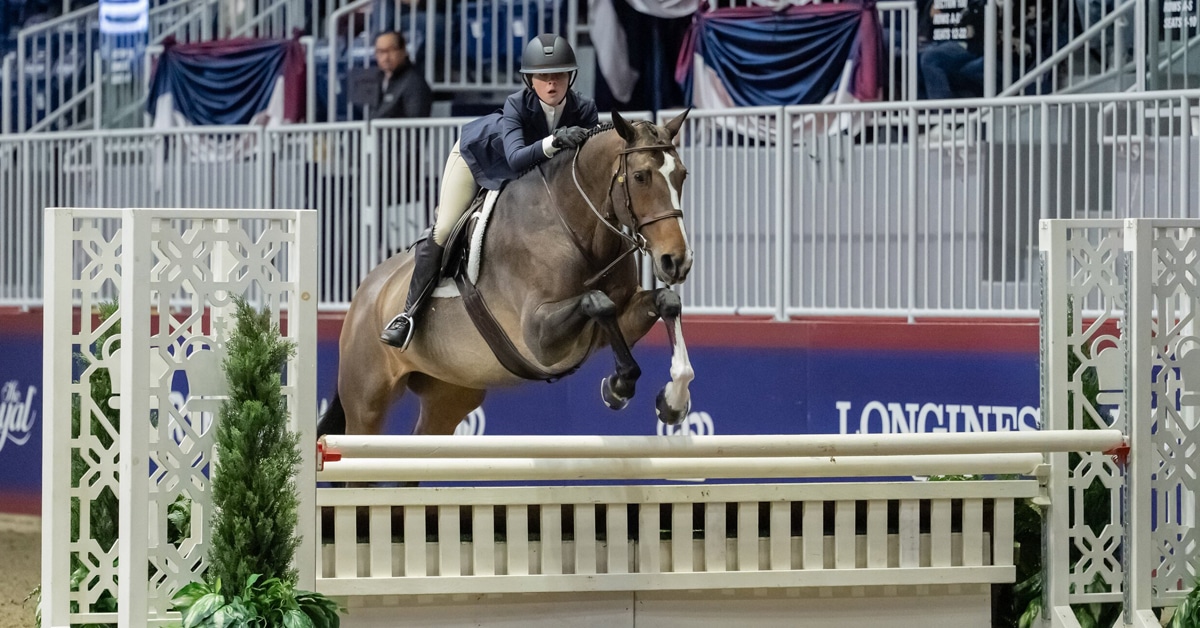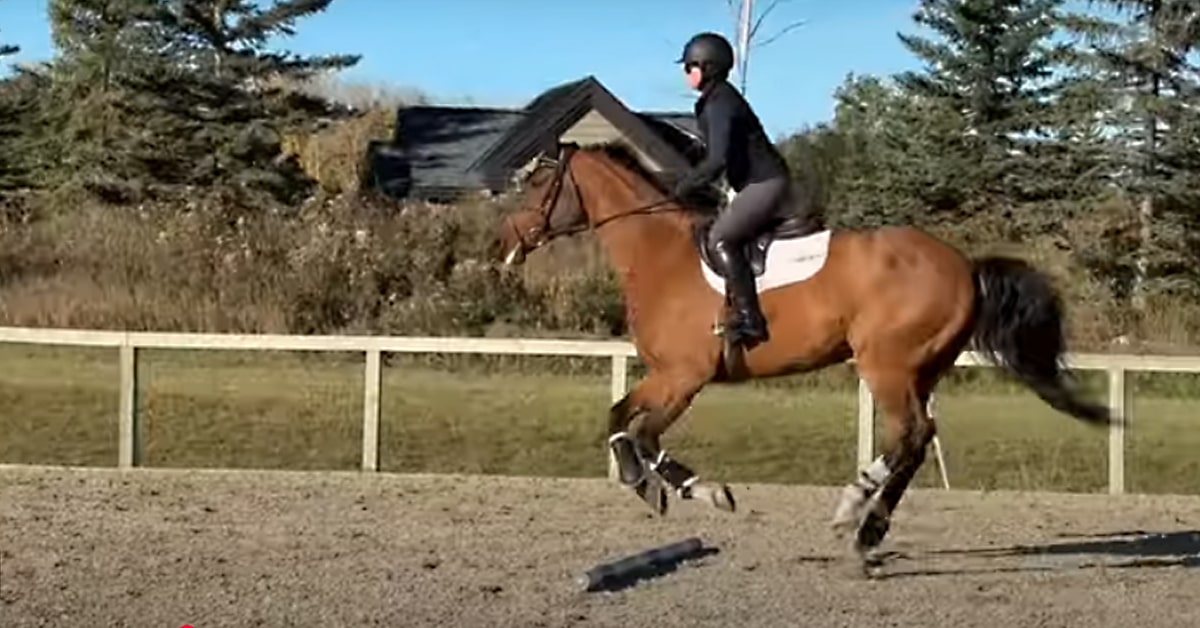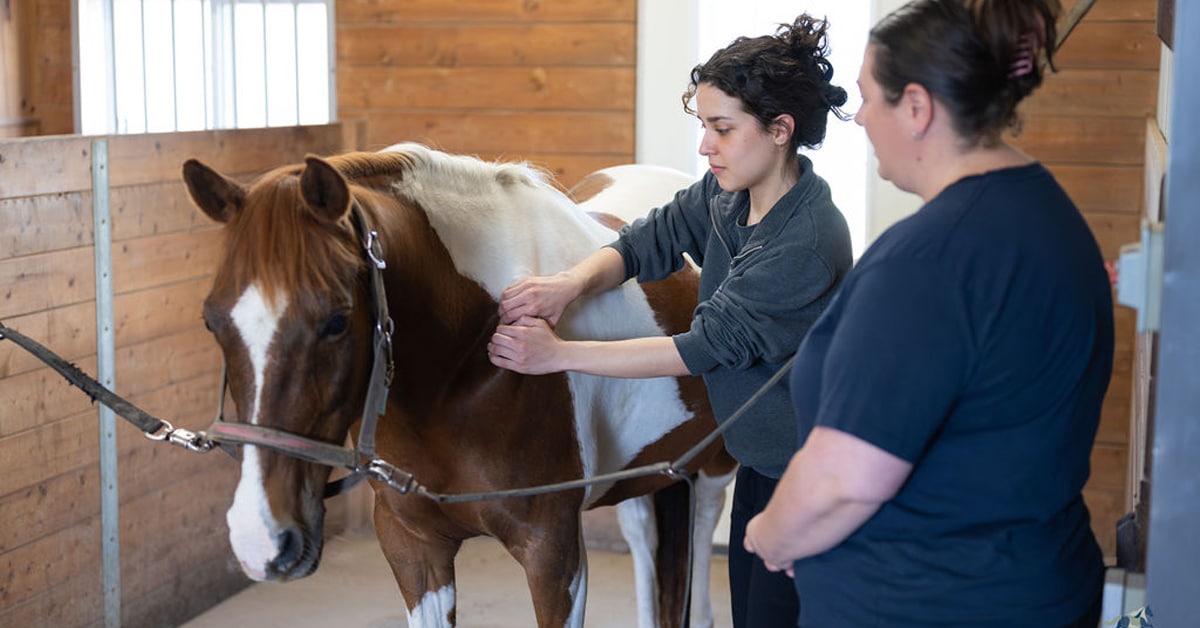In her own words, Tracey Mitchell felt she had to step up.
That sentiment led Mitchell, a registered equine massage therapist for close to three decades, to begin the Mitchell School of Equine Massage Therapy (MSEMT) when she discovered that the program being taught at TriOS College in London, ON – a one-of-a-kind course that drew students from across Canada and internationally – was about to be shuttered.
“The second iteration of the program that was being taught at TriOS College was no longer being offered, and that kind of hit me hard because I was in the second class ever to go through the original program at D’Arcy Lane in 1997,” she said, referring to the program that TriOS bought from the D’Arcy Lane Institute when that school closed in 2017. “The thought of letting 30-plus years of education just go by the wayside broke my heart. Given that I taught in the original program for 14 years, it’s fair to say I have a passion for teaching and educating. I felt I had to step up.”
That passion helped Mitchell create her own program based on her experience and what she learned while a student. The inaugural MSEMT class began their studies in January 2025, and the second semester got underway in September. Elements of the original course curriculum can be seen in Mitchell’s teachings, but there are also new aspects she’s added to help prepare students who want to become the next generation of REMTs (Registered Equine Massage Therapists).
Originally, the program was a 2,200-hour course spread out over two years; Mitchell has shaved that down to just under 1,700 hours over 15 months and believes she and her fellow instructors are using that time more effectively, with nothing being sacrificed in terms of how students learn to meet a high standard of care for their future equine clients. And in a marketplace where there are many different modalities horse owners can choose from, massage therapy is a part of the foundation upon which sound horses can be built.
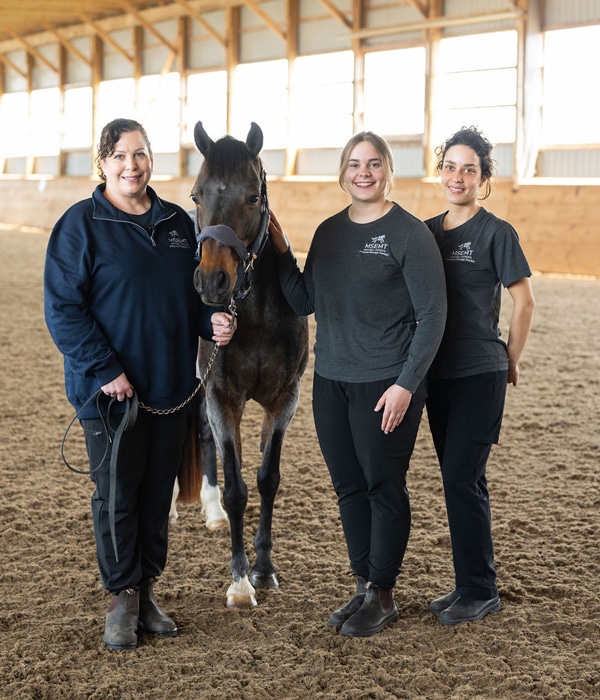
Tracey Mitchell (owner & head instructor), Jaylee Nowlan and Laura Feliu Cortina
Equine massage therapy is not a regulated profession, unlike human massage therapy. The International Federation of Registered Equine Massage Therapists (IFREMT) is the only organization that administers a standardized board examination, which includes both written and practical components overseen by a supervising veterinarian. To earn the designation of REMT, candidates must also complete a 50-hour externship with a veterinarian and, once in practice, must always work under the direction of the horse’s attending veterinarian.
By contrast, the title Certified Equine Massage Therapist (CEMT) is not governed by any central body. “Certification” programs are offered by various schools, individuals, or organizations and may range from a single weekend course to several months of training. There’s no government oversight, accreditation requirement, or licensing exam involved.
“The level of education expected for anatomy, physiology, pathology and so on has not changed, and the equine massage therapists that graduate from this program will have the highest quality of structural and anatomical knowledge, along with the massage therapy part of it all,” Mitchell stated.
“There are lots of other applications that horse owners can choose from, and I’m not one to butt up against those, but in my opinion educated hands is what is going to best serve the horse and the owner,” Mitchell said. “MSEMT is going to make sure that we have that next generation of equine massage therapists ready, that this won’t be a dying profession.” To that end, the cost of taking their IFREMT board exams is included in the tuition. “There aren’t a lot of REMTs out there, and I’m one of the longest-standing ones. I’ve seen how the profession has changed, and those of us that carry that REMT designation are super passionate about it and believe in it.”
Marguerite Old, an IFREMT board member, shared her thoughts about MSEMT. “When I first looked at the program outline, I was impressed at how much it incorporated a modern, online approach while still offering substantial in-person instruction. I am more than satisfied that the curriculum will produce graduates that meet the standards of the IFREMT. I think that MSEMT paying for the board exams is a vote of confidence that the program will have set them up for success.”
A Horse’s “Extra” People
Jaylee Nowlan is one of the hopefuls in that next generation of REMTs and was part of the initial MSEMT class. It wasn’t something she had initially considered as a career path, as she admits to having wanted to be an equine veterinarian. But in taking a Grade 12 co-op class and working with an equine osteopath, she began to reconsider things – as well as seeing a completely different side of treating horses.
“I was able to observe how much the ‘extra’ people in a horse’s life can impact them, whether it is a massage therapist, osteopath, chiropractor or something else,” Nowlan said. “These people are important to the well-being and lifestyle of these horses, whether they’re just a simple pasture puff or a performance horse – they all benefited from their treatment one way or another.”
That led Nowlan to change her educational plans; instead of going for a bio-veterinary science degree from Dalhousie University, she decided to stay home and figure out how to become one of ‘those people.’ Her search led her to Kate Fowler, an REMT who works for Mitchell Equine Massage and is also an instructor with MSEMT. Getting guidance from Fowler put Nowlan on the path of equine massage.
It took just one semester for Nowlan’s idea of what an REMT could be to change in a drastic manner, as the amount of knowledge, experience, and passion required almost felt staggering. She said that first semester was tougher than she had initially thought it might be.
“The amount of in-depth anatomy that we have gone into and starting to learn our manipulations through theory and technique … there is so much thought in every single stroke of a finger when they’re on the horse’s body, and it feels like I took that for granted before I started this journey,” she said. “I figured that it would look like me having clientele at different farms and simply massaging to help enhance the horses’ performance and ensure they were comfortable, but after seeing and starting to learn what I will be truly capable of has been amazing. Not only will I be able to change horses’ lives for the better, but I can also have the opportunity to work alongside amazing vets and other members of the horse’s care team to rehabilitate them and truly get them to their best.”
Nowlan said that her dream of one day having an equine rehabilitation centre is becoming a possibility because of the foundations MSEMT is helping create for her. That’s part of the mentality Mitchell is hoping to build in her students. “If students in this program combine their education with their drive and determination to provide high-quality care, they’re going to set themselves up to do well,” Mitchell said. “I think a lot of times students go out with great gusto and then they realize it’s a lot harder and that this is also a business, so I’m hoping to give them more tools and focus on that part. I want to help raise them up another level.”
Well-Rounded Horse People
Part of the MSEMT application process sees would-be students undergo a handling assessment that contains various elements of horse care. “We ask students to identify areas on the horse and perform certain tasks so we know that when it comes time to go out to the barn and get to the hands-on portion, we’re not going to have to ‘babysit’ them,” Mitchell said.
Another part of the admissions process is a written submission between 500 and 1,000 words detailing why someone wants to train to become an equine massage therapist. “The letters from the first class were very heartfelt, very passionate, and each of them had a story that linked them or drove them into why they wanted to do this, and that means a lot,” she said. “I feel like those are the people that are going to do a really great job. People who don’t have that passion might get themselves a nice little part-time business out of this at the end, but if you talk with any horse person, there is an unspoken passion and devotion and dedication to them.”
Asked what she’s anticipating once she’s completed the program, Nowlan already knows the way she looks at horses is going to be forever changed.
“I’m growing into someone who is able to help horses in ways others may not understand,” she said. “I’m not able to even look at my own horse anymore without analyzing her gait, looking at her conformation, or assessing her posture and body language. I won’t just be an equestrian anymore. I will be an REMT, a member of a horse’s team and someone whose goal is to get them performing and feeling their absolute best.”
~ with files from Matt Harris
The Latest
